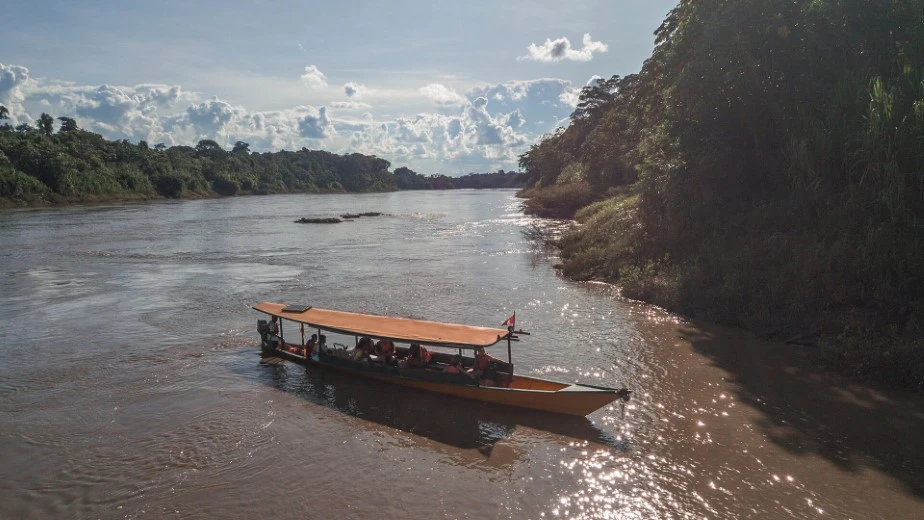Visiting the Tambopata National Reserve in January is an experience full of wildlife and lush landscapes. Although January is the peak rainy season in Tambopata, the forest is greener, there are fewer tourists, and wildlife such as birds and reptiles is highly active. Below, we’ll tell you everything about Tambopata: the advantages and disadvantages of traveling in January, the weather, activities you can do, and some tips to help you plan your trip and be well prepared.
Advantages of visiting Tambopata National Reserve in January
- High bird activity at clay licks: January coincides with the macaw breeding season. At this time, birds (macaws and parrots) are very active at the clay licks, where they feed and nest. During photographic tours, you can capture amazing scenes of these colorful birds.
- Forest full of life: The heavy rains make the Tambopata Amazon rainforest even greener and more vibrant. The vegetation becomes denser and rivers create impressive landscapes, perfect for nature photography.
- Fewer tourists: January is the peak of the rainy season, so many travelers avoid the heavy rains. This means you can take photos more peacefully, with fewer people around and easier access to uncrowded sites.
- Cooler weather: With frequent rainfall, temperatures are slightly lower than in the dry season. This makes jungle walks and photo sessions more comfortable.
- Faster river transport and access to remote areas: With the rain, the Tambopata and Madre de Dios Rivers rise, allowing faster boat travel and shorter transfer times within the reserve. Boats can also reach remote places that are inaccessible during the dry season.
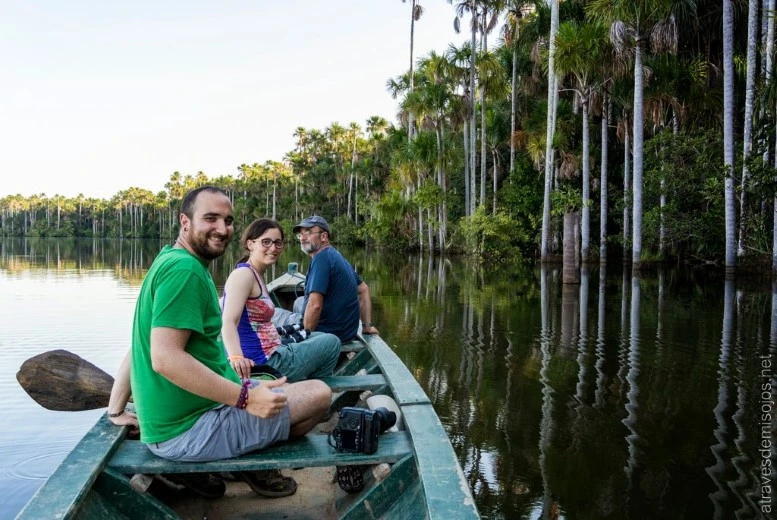
Disadvantages of visiting Tambopata National Reserve in January
- Heavy rains and muddy trails: January is one of the rainiest months of the year in Tambopata. The rainfall can be strong and frequent, sometimes making excursions more difficult. Trails become very muddy, and some activities may be temporarily canceled due to rain.
- More mosquitoes and bugs: The high humidity increases the presence of insects. You’ll need to protect yourself well with repellent and appropriate clothing.
- Possible delays in ground transportation: Rain can make jungle roads more difficult to travel. Bus or car rides may be slower.
- Unpredictable weather: The weather can change quickly. Some outdoor excursions may be affected by sudden downpours. It’s important to check the forecast and plan flexible itineraries.
The disadvantages of visiting Tambopata in January can be managed with proper preparation. With waterproof clothing, repellent, and a flexible attitude toward the rain, you can reduce potential problems and focus on enjoying the experience.
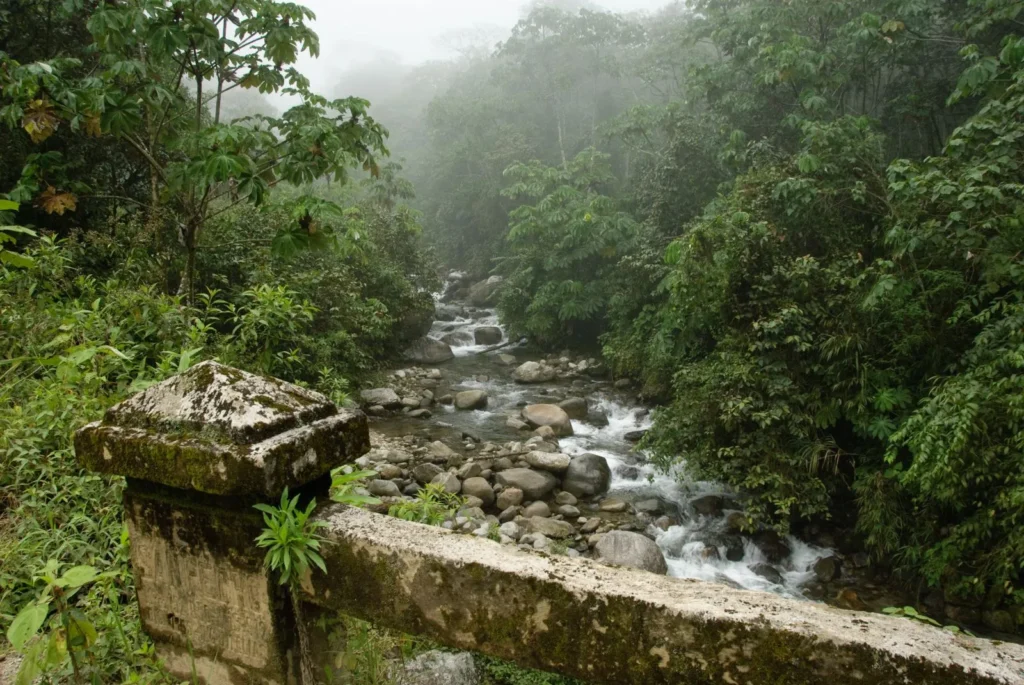
Activities to do in Tambopata National Reserve in January
Tambopata offers unmissable activities for nature and photography lovers:
- Canoeing: Boat rides on the Madre de Dios River, exploring the jungle and spotting turtles, caimans, birds, and butterflies.
- Monkey Island exploration: Observation of different monkey species.
- Guided jungle walk: A two-hour walk through the dense tropical forest, observing medicinal plants, century-old trees, and wildlife such as monkeys and parrots.
- Night wildlife search: A night boat adventure to observe nocturnal animals along the river.
- Sandoval Lake exploration: Rowboat ride on Lake Sandoval, observing caimans, giant otters, herons, turtles, and monkeys.
- Visit to the Matsigenka community: Interaction with a native family to learn about traditional customs and techniques such as using bows and arrows, cotton spinning, and clothing making.
- Night walk on jungle trails: Searching for nocturnal wildlife such as sloths, insects, reptiles, and night monkeys.
- Visit to Chuncho Clay Lick: Observation of the clay lick, where hundreds of macaws and parrots gather to feed on essential minerals.
- Yacumama Lake exploration: Boat ride on Yacumama Lake, spotting caimans, herons, cormorants, wild ducks, swallows, and river otters.
- Piranha fishing: Opportunity to fish piranhas and other species at Yacumama Lake, with quick photos before releasing the fish.
- Trail walk to century-old trees: Exploration of a tree over 700 years old and access to hanging bridges in the forest canopy.
- Wildlife observation on hanging bridges: Observation of toucans, hummingbirds, woodpeckers, monkeys, orchids, and other exotic species from bridges suspended among the treetops.
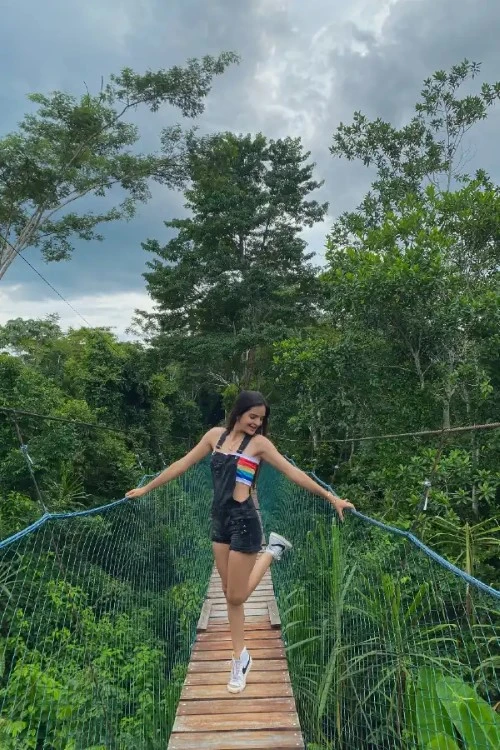
Weather in Tambopata National Reserve in January
- Temperature: average 28°C (between 73°F and 93°F)
- Rainfall: around 361 mm for the month, with approximately 23 rainy days
- Humidity: very high, about 90%
- Sunlight hours: between 5 and 7 hours per day
The rainforest looks green, fresh, and full of life thanks to the rain, creating spectacular settings for a photographic tour.
Tips for traveling to Tambopata in January
- Proper luggage: Lightweight clothing, long sleeves, and quick-dry fabrics. A high-quality raincoat.
- Footwear: Tall waterproof or rubber boots.
- Sun and insect protection: Sunscreen, hat, and repellent with DEET.
- Photography gear: Camera with telephoto lens, light tripod, binoculars, and waterproof cover.
- Health: Yellow fever vaccination is recommended.
- Money and logistics: Bring cash and coordinate all services in advance.
- Reliable guide and agency: Choose authorized tour operators. We recommend Peru Jungle Trips, which specializes in photographic and ecological tours in Tambopata.
- Physical fitness: Prepare with walks beforehand and maintain basic physical condition.
Frequently Asked Questions about Tambopata National Reserve in January
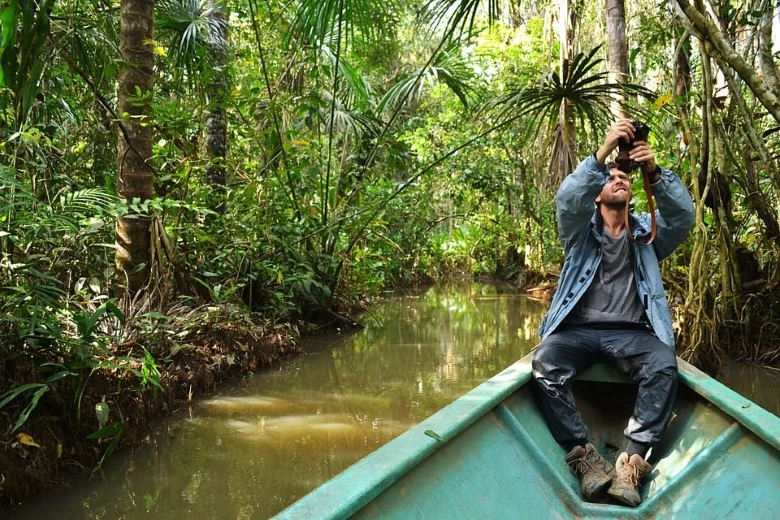
1. Is it recommended to take a photo tour to Tambopata National Reserve in January?
Yes, it is recommended. Although January falls within the rainy season, this month offers unique photography opportunities. The landscapes become very green and lush due to the rain, creating an impressive environment. In addition, it is common to see a wide variety of animals that are usually more active during this time, and with fewer tourists, the experience is more peaceful. However, it is important to be prepared for wet conditions and to deal with more difficult trails due to water and mud.
2. What makes Tambopata special during the rainy season?
Tambopata National Reserve in January becomes denser and more vibrant, with more lush vegetation thanks to the rain. The rivers rise, altering the landscape and creating new habitats. Wildlife is very active, and it’s one of the best times to see macaws at the clay licks, where they gather in large numbers. Additionally, more birds and insects can be observed in general, as biodiversity becomes more visible during this season.
3. How much does the rain affect activities in Tambopata National Reserve in January?
The rain does not cancel the trip. Although it may rain, showers generally last only a few hours, so activities are not heavily affected. Guides are responsible for adapting schedules according to weather conditions. Mornings are usually clearer, allowing for outdoor activities. Tours and other experiences are organized flexibly, based on the weather, to make the most of the best conditions.
4. What activities should I do in Tambopata National Reserve in January?
Specialized photo tours, visiting macaw clay licks, excursions to Lake Sandoval, night walks, canopy adventures, boat rides, and interactions with native communities—all are viable and enriching options in January.
5. What should I bring to Tambopata National Reserve in January?
Rain jacket, boots, quick-dry clothing, insect repellent, sunscreen, protected camera, flashlight, basic first aid kit, and personal documents. Being well-equipped is essential to enjoy your trip without setbacks.
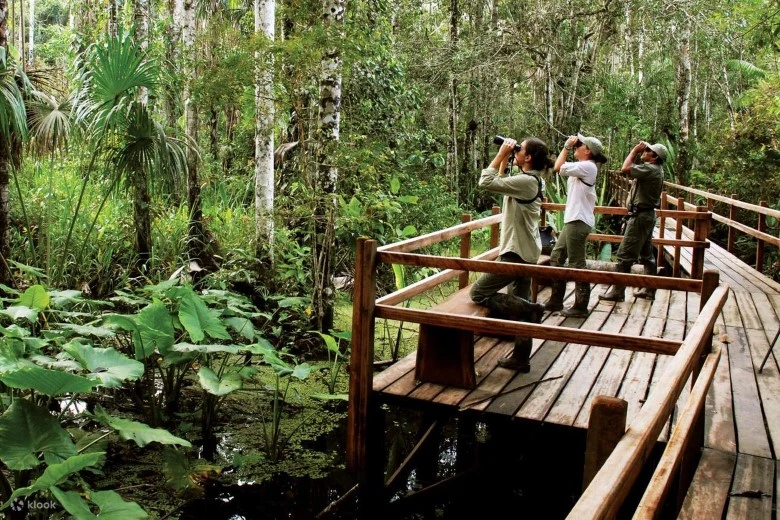
Visiting Tambopata National Reserve in January is an incredible adventure for nature and photography lovers. Yes, it rains, but you’ll also witness the jungle at its most splendid. The wildlife, landscapes, and jungle atmosphere make this month a unique opportunity to capture unforgettable images. Book with Peru Jungle Trips and get ready for an authentic experience in the heart of the Amazon.
Tours to Tambopata National Reserve
- Lake Sandoval (2 Days)
- Tambopata Jungle Tour (3 Days)
- Sandoval Lake + Parrot clay lick + Native Community (4 days)
- Collpa Chuncho Macaw Clay Lick + Sandoval Lake & Yacumama Lake (4 Days)
Related articles about Tambopata National Reserve
- Tambopata National Reserve in December: Wildlife Photo Tour
- Tambopata National Reserve in February: Pros and Cons of Visiting

